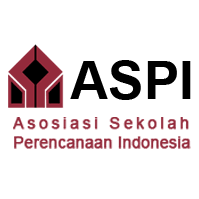PENGARUH CITRA PASAR TRADISIONAL TERHADAP KEBERHASILAN CITY BRANDING KOTA SOLO
DOI:
https://doi.org/10.21776/ub.takoda.2020.012.01.5Keywords:
Traditional Market, Culture, City Image, City Branding.Abstract
The positive image of the city plays a strong role in determining the success of city branding. The positive image of the city makes it easier to form competitive advantages. These city images can be communicated in various ways, and one of them through culture. This research was conducted to determine the influence of the image of traditional markets as a part of the culture of Solo in attracting residents and tourists to stay and visit. Multiple linear regression is used to test and find traditional market image factors that influence the success of city branding. The study used 120 samples consisting of residents and tourists. Sampling uses the combined sampling method. The results of the study show that there is an influence between the traditional market image on the success of city branding. Traditional markets have been proven to be able to influence the formation of a positive image of Solo although it is not the only determinant of the success of city branding. Traditional market condition and traditional market reputation are significant factors in attracting residents and tourists to stay and visit Solo.
References
Anholt, S. The Anholt-GMI City Brands Index: How The World Sees Rhe World’s Cities. Place Branding. 2(1):18-31.
Anholt, S. 2009. Competitive Identity: The New Brand Management for Nations, Cities and Regions. UK. Palgrave Macmillan.
Ashworth, G dan Kavaratzis, M. 2010. Towards Effective Place Brand Management: Branding European Cities and Regions. UK. Edward Elgar Publishing Limited.
Avraham, E dan Ketter, E. 2008. Media Strategies for Marketing Place in Crisis: Improving the Image of Cities, Countries, and Tourist Destinations. UK. Elseiver Inc.
Bıçakçı, A. Branding The City Through Culture: Istanbul, European Capital Of Culture 2010. Human Science. 9(1):993-1006.
Braun, E., Eshuis, J. dan Klijn, E. The Effectiveness of Place Brand Communication. Cities. 41:64-70.
Dinnie, K. 2011. City branding Theory and Cases. UK. Palgrave Macmillan.
Gartner, W. Image Formation Process. Travel & Tourism Marketing. 2(2):191-216.
Kavaratzis, M. From City Marketing to Citybranding: Towards a Theoritical Framework for Developing City Brands. Place Branding. 1(1): 58-73.
Kavaratzis, M dan Ashworth, G. City Branding: an Effective Assertion of Identity of a Transitory Marketing Trick. Place Branding. 96(5): 506-514.
Rehan, R. Urban Branding as an Effective Sustainability Tool in Urban Development. Housing and Building Research Center. 10: 222-230.
Rainisto, R. 2003. Success Factors of Place Marketing: A Study of Place Marketing Practices in Northem Europe and The United States. Hensinki University of Technology.
Riza, M. Culture and City Branding: Mega-Events and Iconic Building as Fragile Means to Brand The City. Social Science. 3(7): 269-274.
Yananda, M dan Salamah, U. 2014. Branding Tempat: Membangun Kota, Kabupaten, dan Provinsi Berbasis Identitas. Jakarta. Makna Informasi.
Downloads
Published
How to Cite
Issue
Section
License
Authors who publish with this journal agree to the following terms:
- Authors retain copyright and grant the journal right of first publication with the work simultaneously licensed under a Creative Commons Attribution License that allows others to share the work with an acknowledgement of the work's authorship and initial publication in this journal.
- Authors are able to enter into separate, additional contractual arrangements for the non-exclusive distribution of the journal's published version of the work (e.g., post it to an institutional repository or publish it in a book), with an acknowledgement of its initial publication in this journal.
- Authors are permitted and encouraged to post their work online (e.g., in institutional repositories or on their website) prior to and during the submission process, as it can lead to productive exchanges, as well as earlier and greater citation of published work (See The Effect of Open Access).



















